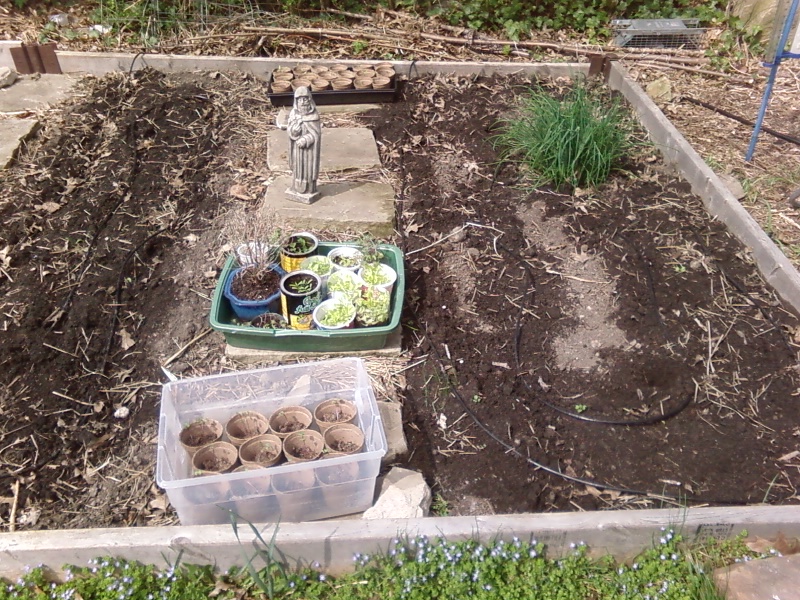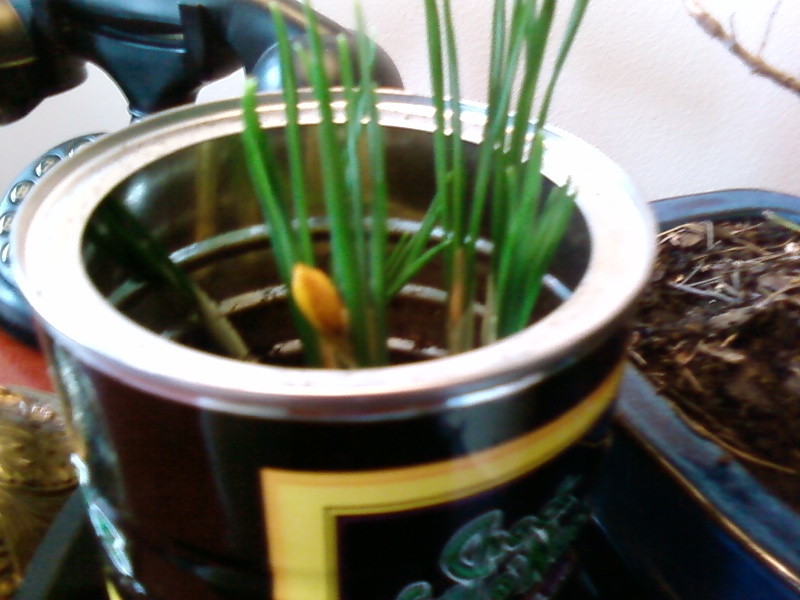My lodge cast-iron skillet arrived this week and this morning I tried it out for the first time.
First I went outside and pulled up two of my shogoin turnips.
I broke the greens off the tops and threw the roots in my wheelbarrow. The roots were obviously full of of root maggots; I could see the little holes where they tunnel inside all over the outside.
Now the root maggots don’t actually ruin the root for eating. The maggot is a tiny little grub about the size of a big grain of salt. The tunnels mostly just look gross when you slice up the root into chunks.
Plenty of turnip recipes involve mashing up the root after boiling it down; maybe the mashing is really just a way of hiding the evindence of the root maggots.
The greens at the top of these plants looked great. That awfully bitter pepper taste that causes most people to gag when they eat turnip greens raw is also a fantastic deterrent for aphids and leaf-eating caterpillars. These leaves showed nearly no signs of damage.
I went inside and I put a tiny bit of canola oil (like about one fourth of a teaspoon) into my new skillet and swirled it around. I added four strips of bacon and turned the heat to medium.
The plants were generally clean, but when I pulled the roots, I accidentally got some soil onto the leaves. So I rinsed the turnip greens. Then I removed the stems, rolled up the leaves, and chopped the rolled-up leaves.
Then I added about four cloves of garlic (whole, not crushed or minced) to the skillet with the bacon. I also chopped up half of an onion and threw that in there.
Once I saw the bacon was at that chewy texture that I’m fond of, and the onions were softening up, I added the chopped-up turnip greens and put the lid on.
I looked all over the kitchen for a can of chicken stock, but I couldn’t find any, so I added about a half-cup of water instead.
Then I set the oven timer for 12 minutes, drank coffee, and read my newest issue of Countryside Magazine. This one has a fantastic article in there by Harvey Ussery all about the science of growing cover crops to improve soil structure. Here’s a good excerpt:
Let’s focus again on this fact: The greatest diversity and concentration of soil species is in the area immediately surrounding plant roots, the rhizosphere. That is, the more roots in the soil, the more alive is the soil; and as we have seen, a soil that is more alive is more fertile. This maybe be counterintuitive, since we’ve probably been conditioned to think that crop plants take nutrients out of the soil (with the sly implication that we have to purchase nutrients — “fertilizers” — to replenish them).
In other words, soil that is crammed full of weed roots is actually more fertile than soil that is bare on the surface.
As long as the plant material is left to decay in place, then over time, soil fertility improves. Before you start talking about thermodynamics, remember that this is not a closed system. The sun sends energy to the earth, and plants harness that energy and then store it chemically.
Here’s a tangent — I have a bunch of half-baked ideas about what software writers can learn from organic gardening. For example, we focus too much on enforcing uniformity. Instead, we should learn how to cooperate in larger systems where other actors behave nothing like us.
My bean plants have figured out how to cooperate with bacteria. The bean plants host the bacteria in little nodules in their roots and they supply sugars to the bacteria. The bacteria then consume that sugar and output nitrogen molecules in a form that the plant can use.
Meanwhile, we throw tantrums and won’t accept help from somebody else once we learn that their code indents with tabs instead of spaces.
But that stuff goes in a different text file.
Anyhow, the kitchen timer never went off. Instead, I decided the greens were ready at around the 9-minute mark, after I stirred the stuff in the skillet and then tasted it.
Next I used a wooden spoon to scrape all the bacon, onions, garlic cloves, and cooked turnip greens into a big pasta bowl.
It is important to add a little salt and plenty of hot sauce at this point. Use a hot sauce with a lot of vinegar, like tabasco sauce. The acidity in the vinegar and the salt has some extra effect on the greens that cause the last traces of violent bitterness to change into a smooth smokey flavor instead.
The meal was delicious.













